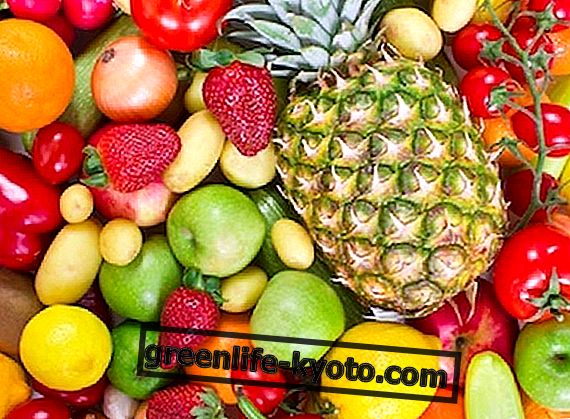Dietary foods are those foods intended for people with special nutritional needs, such as celiacs, diabetics or athletes. Let's find out better.

What are diet foods
Dietary foods (also called "regime foods" or "foods for particular nutrition") should not be confused with " functional foods ".
The latter are characterized by additional effects due to the presence of components, generally non-nutrients, which interact more or less selectively with one or more physiological functions of the organism, but they cannot be considered as dietetic foods intended for individuals suffering from specific pathologies .
Functional foods are in fact aimed at healthy subjects who wish to remain healthy and can be purchased directly from the consumer, while dietetic foods are used on specialized medical indications.
The term "dietetic product" is however used to indicate a very heterogeneous category of preparations with the most varied applications. Only the legal provisions are able to provide the tools to identify exactly the nature of the products offered to consumers.
As specified in the Legislative Decree 111 of 27 January 1992, which transposes Directive 89/398 / EEC (later replaced by the recast Directive 2009/39 / EC), the name of " product intended for special nutrition " is reserved for foods which, by composition or modalities of the production process, show:
- stand out from everyday foods;
- present a precise nutritional goal.
On the regulatory level, therefore, the term "dietetic", whose use is optional, refers to the ability of a product to meet particular nutritional needs without having any bearing on the quality of the food and above all with the its energy value.
Who has special nutritional needs?
Article. 1 c. 2 of Legislative Decree 111/1992 identifies the three categories of consumers to whose particular nutritional needs a food product must meet in order to be classified as a "product destined for a particular diet" and that is:
- people whose absorption, digestion, assimilation, metabolization or excretion capacity of ordinary foods or some of their ingredients or metabolites are reduced, limited or disturbed, or whose state of health determines different particular nutritional needs that cannot be satisfied through a change in the normal diet;
- people in particular physiological conditions that can benefit from the controlled intake of certain substances present in food;
- infants (children under the age of 12 months) or children in early childhood in good health.
What are diet foods
- Foods for special medical purposes (AFMS) . They are dietetic products formulated in a special way and intended for use by patients with specific pathologies. In particular, they are foods:
- processed or formulated, requiring to be used "under medical supervision";
- intended for the complete or partial feeding of patients with limited, diminished or disturbed ability to take, digest, absorb, metabolize or excret the foods of current use or of some nutrients or metabolites contained in them, or with other clinically specific nutrient requirements ;
- intended for the complete or partial feeding of patients whose dietary treatment cannot be achieved either with a modification of the normal diet, or using other diet products, or combining commonly used foods with other diet products.
- Gluten-free foods for people with celiac disease intolerant to gluten. If the food products have a gluten content of less than 20 mg / kg or 20 mg / L they may carry the wording without gluten; only diet products, if they have a value of less than 100 mg / kg or 100 mg / L, may carry the words "with very low gluten content". As with AFMS, even for gluten-free foods, there is a national product register available on the Ministry of Health website.
- Foods with low sodium content, including dietary salts, low salt, anodic. Dietary salts, considered salt surrogates for subjects with particular nutritional needs, including low salt salts, with a sodium content between 7.8 g and 13.6 g on 100 g of product, and asodic salts, with a quantity of sodium at most 120 mg / 100 g. For both types of products the maximum content of potassium, deriving from the replacement salts used as ingredients, does not exceed a level in the order of one third of the total weight.
- Foods with low (or reduced) energy value intended for weight control. Among the mandatory indications to be reported on the label it is necessary to highlight the one that reminds us of the importance of taking an adequate quantity of liquids daily, the average quantity of each mineral and each vitamin, for which mandatory requirements are required; it is also necessary to indicate that the food may have a laxative effect if the product supplies a quantity of polyols or polyalcohols, greater than 20 g daily.
- Food for diabetics .
- Foods suitable for intense muscular effort, especially for athletes (pending specific legislation).
- Formulas for infants, follow-on and other formulas for weaning, baby foods.
In conclusion, the dietary product must have a nutritional composition suited to the needs of a particular category of consumers, even though it may not be suitable for consumption by the entire population.












